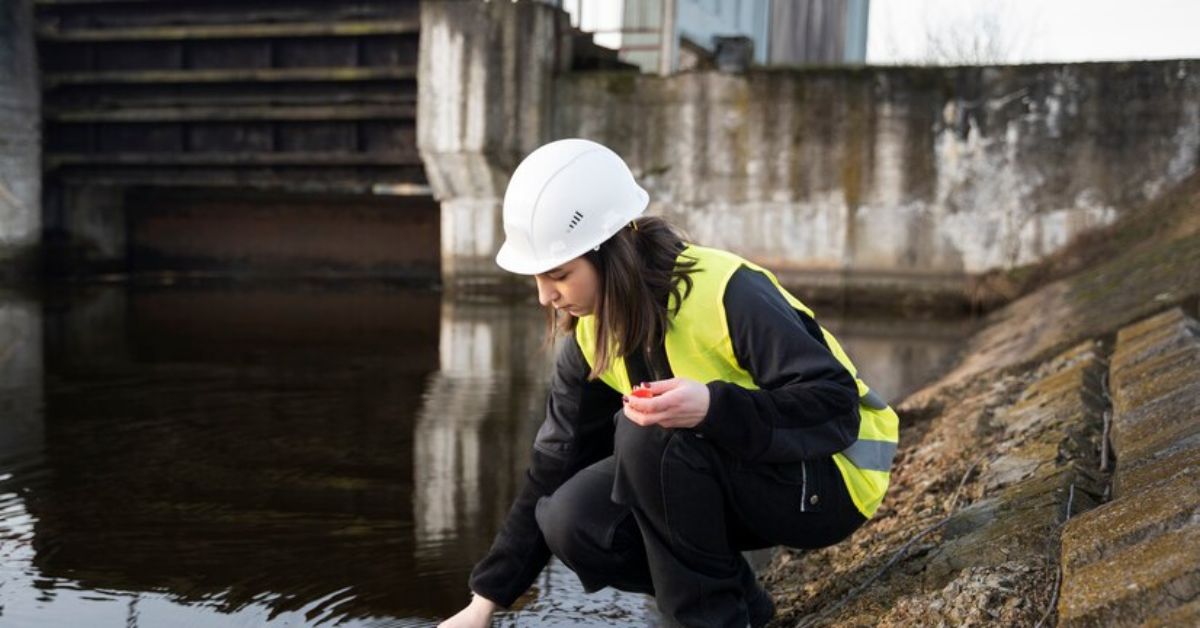What is Mechanical Dewatering?
Mechanical dewatering is a pivotal technique in wastewater management. Effectively separating liquids from solids is crucial in reducing waste volume and optimizing disposal procedures. Industries worldwide depend on this technology to manage and treat wastewater efficiently. Mechanical dewatering involves using highly specialized equipment to compress and squeeze out liquids from solid waste. This separation of fluids from sludge not only minimizes the amount of waste but also enhances the ease of waste handling and disposal.
With various forms of equipment available, ranging from centrifuges to screw presses, the technology adapts to the specific needs of operations. Each technique has advantages, making mechanical dewatering a versatile and indispensable process in industrial and municipal applications.
Standard Techniques in Mechanical Dewatering
- Centrifugation: Centrifugation is a commonly used method for dewatering that effectively uses centrifugal force to separate solids from liquids. Through rapid spinning, solids are forced to the perimeter of the centrifuge while liquids are drawn out. This technique is advantageous in environments requiring quick processing and high throughput, making it a staple in many wastewater treatment facilities.
- Belt Filter Press: The belt filter press method extracts water from sludge using a continual gravitational and mechanical pressure system. As the sludge is conveyed through the machine between tensioned belts, gradual pressure is applied, squeezing out water efficiently. This process is known for its reliability and is frequently used in municipal waste treatment plants.
- Screw Press: The screw press design offers a simple yet powerful solution for solid-liquid separation. A slow-moving screw travels through a tube, compressing sludge and extruding moisture through screens. Its streamlined design and minimal energy usage suit environments with limited space or energy restrictions.
- Chamber Filter Press: In the chamber filter press method, hydraulic pressure is a key component, compressing slurry within tightly sealed chambers. This pressure effectively separates solids, allowing for efficient moisture extraction. This approach is beneficial where high solids capture rates are required, providing a robust and efficient dewatering solution.
Benefits of Mechanical Dewatering
Implementing mechanical dewatering in wastewater management offers nuanced advantages that extend moisture reduction. It plays a vital role in lowering transportation and disposal costs by significantly reducing the volume and weight of waste material. This volume reduction optimizes space usage, easing pressure on landfill sites and reducing the environmental footprint of waste management practices.
Additionally, mechanical dewatering provides an opportunity to recycle and repurpose waste by-products into usable materials. This not only aids in waste reduction but also offers economic benefits by transforming waste into valuable resources. Furthermore, dewatering enhances environmental compliance by facilitating safer disposal options. Removing excess moisture significantly reduces the risk of pathogen spread and other environmental hazards.
Challenges Faced in Mechanical Dewatering
Despite its numerous benefits, mechanical dewatering does encounter challenges that can impact its widespread adoption. The up-front costs of investing in dewatering machinery can be considerable, and this is compounded by ongoing maintenance needs to ensure optimal operation. Moreover, the energy intensity of some dewatering processes can contribute to high operational costs, raising concerns about sustainability and efficiency.
An additional challenge lies in balancing the energy requirements with environmental impact. As noted in scientific research, there is a continuous quest to enhance the energy efficiency of dewatering systems to align with more environmentally sustainable practices. These challenges necessitate innovation and adaptation in the waste management sector to overcome hurdles effectively.
Integration with Modern Wastewater Treatment
Mechanical dewatering’s integration with modern wastewater treatment technologies has revolutionized the field by combining proven methods with cutting-edge solutions. For example, using membrane bioreactors alongside traditional dewatering systems has enhanced purification and solid separation capabilities, leading to more refined wastewater treatment processes.
This integration addresses efficiency issues and streamlines operations, reducing potential bottlenecks within waste treatment facilities. As wastewater composition and regulatory requirements evolve, mechanical dewatering’s adaptability remains crucial in maintaining effective and compliant wastewater management systems.
Case Studies of Successful Dewatering Applications
Municipalities worldwide have documented numerous successful applications of mechanical dewatering processes. For instance, large metropolitan areas have integrated these technologies into their sewage treatment plants, dramatically decreasing sludge moisture levels.
These case studies highlight the effectiveness of mechanical dewatering techniques in achieving operational efficiency and cost savings. Through tailored applications, waste management facilities can broaden their scope of operations while achieving higher standards and addressing the diverse needs of urban environments.
Future Trends in Mechanical Dewatering
Advancements in mechanical dewatering continue to shape the future of wastewater management, focusing on innovations that drive sustainability and efficiency. The advancement of automated systems and cutting-edge technologies signifies a new phase in dewatering processes, aiming to minimize energy usage and enhance environmental sustainability.
Future trends also include incorporating AI-driven optimization models, which promise to enhance decision-making processes and improve the efficiency of dewatering applications. Emerging technological solutions will provide more dynamic and adaptive dewatering options, ensuring the industry’s growth aligns with global sustainability goals.
Considerations for Environmental Impact
As advancements in mechanical dewatering occur, environmental considerations must be central to development and implementation strategies. By evaluating processes to minimize emissions and reduce energy consumption, mechanical dewatering can contribute positively to environmental sustainability initiatives.
Meticulous monitoring and continuous process optimization are pivotal in achieving an optimal balance between efficiency and environmental responsibility. As the industry evolves, a focus on reducing ecological footprints through sustainable practices will equip waste management frameworks to meet future demands effectively and responsibly.











